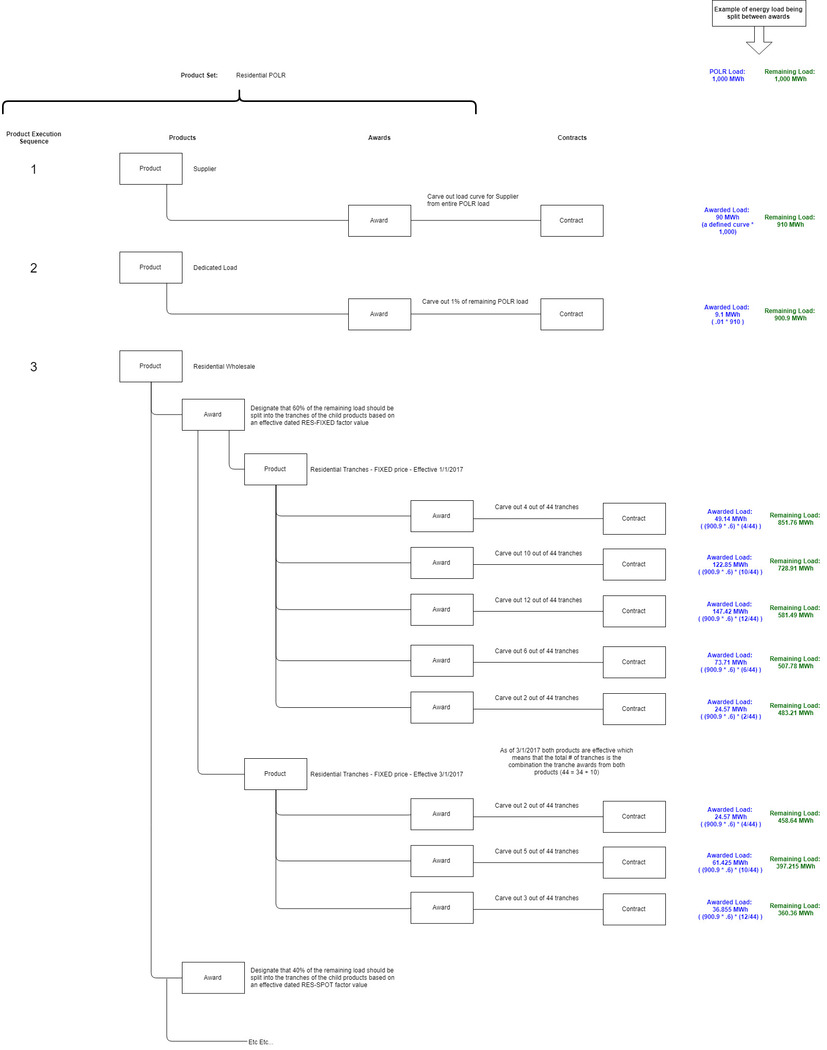Allocating Load via Market Products, Awards, and Contracts
Distribution companies operating in deregulated markets are often designated as the Provider of Last Resort (POLR) for customers that either have not selected a supplier or have been dropped by a supplier. If allowed by legal and market rules, the distribution company can elect to outsource the responsibility of supplying POLR load to qualified wholesalers.
The POLR consumers will still, either directly or indirectly, receive bills for distribution services from and pay the distribution company, but the wholesaler takes responsibility for procuring and serving the POLR load, for which they receive payments from the distribution company.
A simple example of the POLR allocation process might involve the following steps:
- Subtract all other suppliers from the zonal load to get the remaining POLR load.
- Allow for the distribution company to separate out any owned generation.
- Divide POLR load amongst awarded wholesale contracts.
Details of these transactions would be sent to the market operator by contract ID.
These awards of POLR load can be defined in the application by Market Products (which belong to a Market Product Set), Market Awards, and Market Contracts.
To elaborate on the example above, a market product set might the following set of market products:
- A product and award to carve out load from the POLR load for one or more suppliers. This would be a “Fixed Profile” award.
- A product and award to carve out a percentage of the remaining POLR load for owned generation. This would be a “Percentage” award.
- A product and awards that distribute the remaining POLR into various bundles of tranches (chunks of load) to wholesalers. These would be “Tranche” awards.
The following diagram illustrates the way in which this distribution would work.

The Market Award Allocation settlement calculation rule is used to perform the allocation of load the designated market products and awards. This rule is part of a larger settlement calculation process, using settlement quantities (the POLR load) calculated by other rules (such as Array Math and Vector and Service Quantity Math). The Market Award Allocation rule allocates those quantities to the products within a specified Market Product Set, and saves the results for export to the appropriate market participants.
